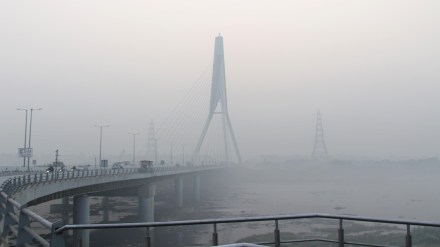The overall air quality in Delhi has been recorded in the ‘very poor’ category for the third day in a row, with the Air Quality Index (AQI) standing at 347, with temperature settling at 17.3 degrees Celsius on Tuesday morning in the national capital, according to India’s System of Air Quality and Weather Forecasting and Research (SAFAR).
Meanwhile, several regions in the city recorded near ‘hazardous’ air quality, with AQI exceeding 350.
Also Read:Delhi air quality remains ‘very poor’ despite 15-point winter action plan in place
According to the data from the Central Pollution Control Board (CPCB), the AQI around North Campus, Delhi University was recorded at 394 in the morning hours while the ITO area in New Delhi had an AQI of 332. Lodhi Road recorded an AQI of 301.
Noida recorded an AQI of 371 (very poor) while the AQI stood at 270 (poor) in Gurugram.
Also Read:Smog shrouds Delhi as air quality dips to ‘very poor’ category, AQI at 306
This is an alarming situation for residents of the Delhi-NCR region. Despite the implementation of a 15-point winter action plan to reduce rising pollution, there has been no significant change in air quality, as reported by ANI.
Initiatives like ‘Red Light on, Gaadi off’ are in motion to address vehicular and biomass-burning emissions contributing to rising PM2.5 levels. The haze is likely to persist, with a ‘very poor’ air quality forecast for the region till October 31.
What is the Air Quality Index (AQI)?
The Air Quality Index (AQI) is a vital tool for effectively communicating air quality status to the public in an easily understandable manner. It consists of six AQI categories: Good, Satisfactory, Moderately Polluted, Poor, Very Poor, and Severe.
Each category is determined based on the levels of ambient concentrations of air pollutants and their potential health impacts, known as health breakpoints. According to the AQI scale, air quality falls into the following ranges: 0 to 50 is ‘good,’ 51 to 100 is ‘satisfactory,’ 101 to 200 is ‘moderate,’ 201 to 300 is ‘poor,’ 301 to 400 is ‘very poor,’ and 401 to 450 is ‘severe.”
(With PTI inputs)
